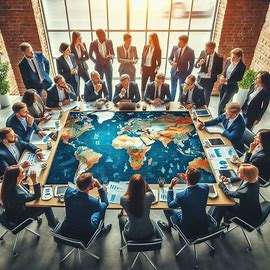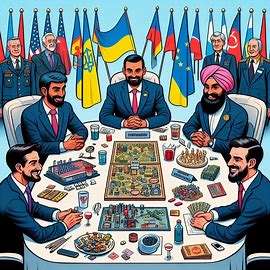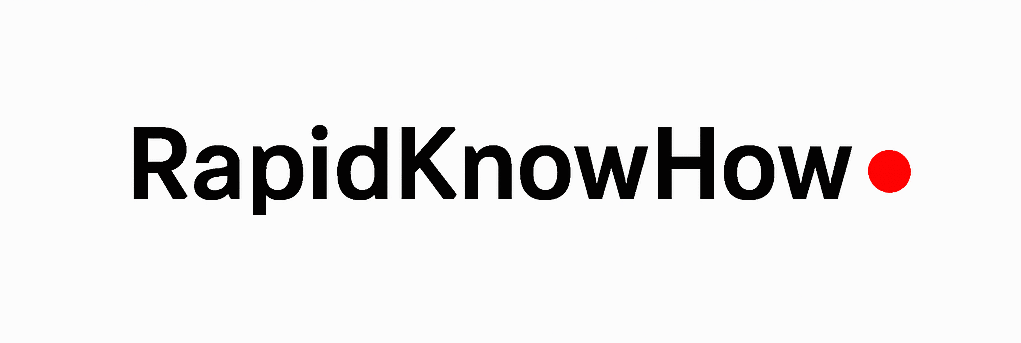RapidKnowHow > Ukraine War > Who is going to win the war? Russia > Evaluating Probability Ukraine > Evaluating Probability > Conclusion
The question of who is going to win the war in Ukraine is complex and involves numerous factors, including military strategy, international support, economic conditions, and internal politics. Here’s a structured evaluation of both sides:
Russia: Evaluating Probability
- Military Resources: Russia has a larger military in terms of personnel and equipment. However, it has faced significant logistical issues and morale problems among troops. The reliance on conscripts and the losses sustained have raised questions about their ability to maintain operational effectiveness.
- Economic Stability: Sanctions imposed by Western countries have severely impacted the Russian economy. While Russia has managed to adapt somewhat, its long-term economic viability is questionable, especially if the war drags on.
- Political Will: The Kremlin’s decision-making appears to be somewhat insulated from public opinion, but prolonged conflict could lead to increased domestic dissent. How Putin navigates internal pressures could affect morale and military capability.
- International Relations: Russia’s global standing has been diminished, and its alliances (like with Belarus or support from countries like Iran) are not robust enough to outweigh its isolation from Western nations.
Ukraine: Evaluating Probability
- Military Support: Ukraine has received substantial military aid from Western countries, which has significantly bolstered its defense capabilities. Ongoing support is critical; if this continues, Ukraine’s chances of regaining territory improve.
- Morale and Motivation: The Ukrainian fighting spirit is high, with significant public support for the war effort. Civilians also play a role, contributing to the resistance and logistics.
- Strategic Defensive Position: Ukraine has effectively employed asymmetric warfare tactics, making it challenging for Russian forces to achieve their objectives.
- International Support: Continued support from the EU, NATO, and other allies has provided not just military aid but also economic and humanitarian assistance. As long as this backing remains strong, Ukraine will likely maintain a robust defense.
Conclusion
The outcome of the war in Ukraine remains uncertain and hinges on various dynamic factors.
- If Russia can consolidate its gains and maintain its economic and military resources, it might continue to apply pressure on Ukraine. However, significant challenges persist.
- Conversely, if Ukraine continues to receive robust international support and can capitalize on its defensive strategies, it may push back against Russian advances and potentially reclaim lost territory.
Ultimately, the probability of either side “winning” depends on both immediate tactical developments and long-term strategic outcomes, including international political shifts and changes in public sentiment. Thus, while an outright “win” may not be easily defined, the conflict’s resolution likely requires negotiations, with various elements influencing the eventual outcome.
Who are the key stakeholders impacting the conflict’s resolution
In the context of the Ukraine conflict, several key stakeholders are influencing the resolution of the situation. Here’s a ranked list of those stakeholders based on their power and impact on the conflict:
1. Russia (Vladimir Putin)
- Power: High
- Impact: As the aggressor in the conflict, Russia has significant military and economic resources at its disposal. Putin’s decisions directly affect the direction and duration of the war, including troop deployments, territorial claims, and potential negotiations.
2. Ukraine (Volodymyr Zelenskyy)
- Power: High
- Impact: The Ukrainian government controls its military and has the backing of its populace. President Zelenskyy plays a crucial role in national strategy and is key to negotiating peace or continuing resistance. The resilience and effectiveness of Ukraine’s armed forces are vital to their ability to reclaim territory and maintain sovereignty.
3. United States
- Power: High
- Impact: The U.S. is a primary supporter of Ukraine, providing military aid, financial assistance, and political backing. American involvement significantly influences NATO’s posture and the overall support Ukraine receives from other allies.
4. European Union and NATO
- Power: High
- Impact: The EU, along with NATO member states, plays a crucial role in providing military and humanitarian aid to Ukraine and in sanctioning Russia. The unity and decisions made within Europe can change the dynamics of support and opposition to the conflict.
5. International Organizations (UN, OSCE)
- Power: Medium
- Impact: Organizations like the United Nations and the Organization for Security and Co-operation in Europe can facilitate dialogue and offer platforms for negotiations. Their ability to mediate and influence international law can impact the nature of any resolution.
6. China
- Power: Medium
- Impact: China’s stance on the conflict can significantly affect Russia’s position, especially economically and diplomatically. While it has maintained a more neutral stance, China’s eventual interest in the outcome could influence strategic calculations, particularly how it aligns with its own geopolitical goals.
7. Other Countries (Turkey, India, etc.)
- Power: Medium to Low
- Impact: Countries like Turkey have attempted to mediate while maintaining relations with both Ukraine and Russia. Their influence is limited but can play a role in negotiations and regional dynamics, especially in diplomatic efforts.
8. Armed Groups/Separatists
- Power: Low
- Impact: Local factions within Ukraine, including pro-Russian separatists, impact the ground situation but are largely subordinate to the larger narratives set by the major actors (Russia and Ukraine). Their actions can influence localized conflicts but have limited power on the overall resolution.
Conclusion
The ranking of power among stakeholders reflects their direct influence over military operations, political negotiations, and international diplomacy. The resolution of the conflict largely depends on the interactions among the top-tier stakeholders (Russia, Ukraine, the U.S., and the EU/NATO), while other stakeholders play supportive or mediating roles in shaping the outcomes.
RapidKnowHow > The Ukraine Game : Simulating Three Scenarios > Assessing the Results > Conclusion
The Ukraine Game: Simulating Three Scenarios

Introduction
The conflict in Ukraine necessitates strategic assessments to understand potential outcomes and implications. By simulating different scenarios, policymakers and analysts can gauge the effectiveness of varying strategies. This simulation exercises three different scenarios based on currently observable trends and potential developments.
Scenario 1: Status Quo Persistence
In this scenario, the ongoing conflict remains as it has been with sporadic fighting but no significant changes in the front lines. Ukraine continues to receive military aid, while Russia maintains its territorial hold over the regions it has occupied.
Assumptions:
- Continued military support from the West to Ukraine.
- No substantial changes in Russian military strategy.
- Domestic support in both Ukraine and Russia remains stable.
Results:
- Military Impasse: Continued stalemate leads to a war of attrition, with high casualties on both sides.
- Economic Strain: Both nations face significant economic challenges, with Ukraine’s infrastructure increasingly damaged.
- Public Sentiment: War fatigue sets in among the general populace in affected areas, while nationalist fervor persists in Ukraine.
Scenario 2: Ukrainian Offensive Success
In this scenario, Ukraine launches a successful military offensive, reclaiming substantial territories occupied by Russian forces.
Assumptions:
- Enhanced training and supply of advanced weaponry from Western allies.
- Effective Ukrainian command and coordination leading to a breakthrough.
Results:
- Territorial Gains: Ukraine regains significant areas, increasing morale and international support.
- Russian Response: Heightened aggression from Russia, potentially leading to escalated military actions or a declaration of war.
- Diplomatic Dynamics: Increased pressure on Russia from international communities, leading to potential negotiations or increased sanctions.
Scenario 3: Negotiated Peace
In this scenario, both sides agree to a ceasefire and enter negotiations for a peace settlement.
Assumptions:
- Recognition of mutual exhaustion and desire for stability.
- Involvement of major international mediators (e.g., Turkey, China) pushing for peace talks.

Results:
- Ceasefire Agreement: A preliminary ceasefire leads to negotiations focusing on territorial disputes, reparations, and security guarantees.
- Reconstruction Focus: International funding and support begin to flow toward Ukrainian reconstruction.
- Long-Term Challenges: Political divisions within Ukraine related to the peace agreement, potential unrest, and long-term military presence of Russian forces in some areas.
Assessing the Results
Each scenario presents distinct outcomes, with varying implications for Ukraine, Russia, and the international community.
- Status Quo: This scenario risks prolonged instability, humanitarian crises, and economic collapse for Ukraine. Continued militarization may lead to heightened risks of war spreading beyond Ukraine’s borders.
- Offensive Success: While a successful offensive could lead to bolstered Ukrainian sovereignty, it carries the risk of catastrophic escalation, possibly drawing in greater military responses from Russia and its allies.
- Negotiated Peace: This scenario, while presenting an opportunity for stability and international engagement in reconstruction, may lead to internal divisions in Ukraine and ongoing tensions regarding territorial integrity, especially if compromises are necessary.
Conclusion
The simulation of these three scenarios highlights the complexity of the Ukraine conflict and the precarious balance of power and interests involved. Successful outcomes depend not only on military actions but also on international diplomacy, public sentiment, and economic conditions.
Understanding these scenarios can inform policy decisions and strategic planning, encouraging stakeholders to seek pathways toward sustainable peace while recognizing the inherent challenges in negotiations and the potential for unforeseen escalations.





